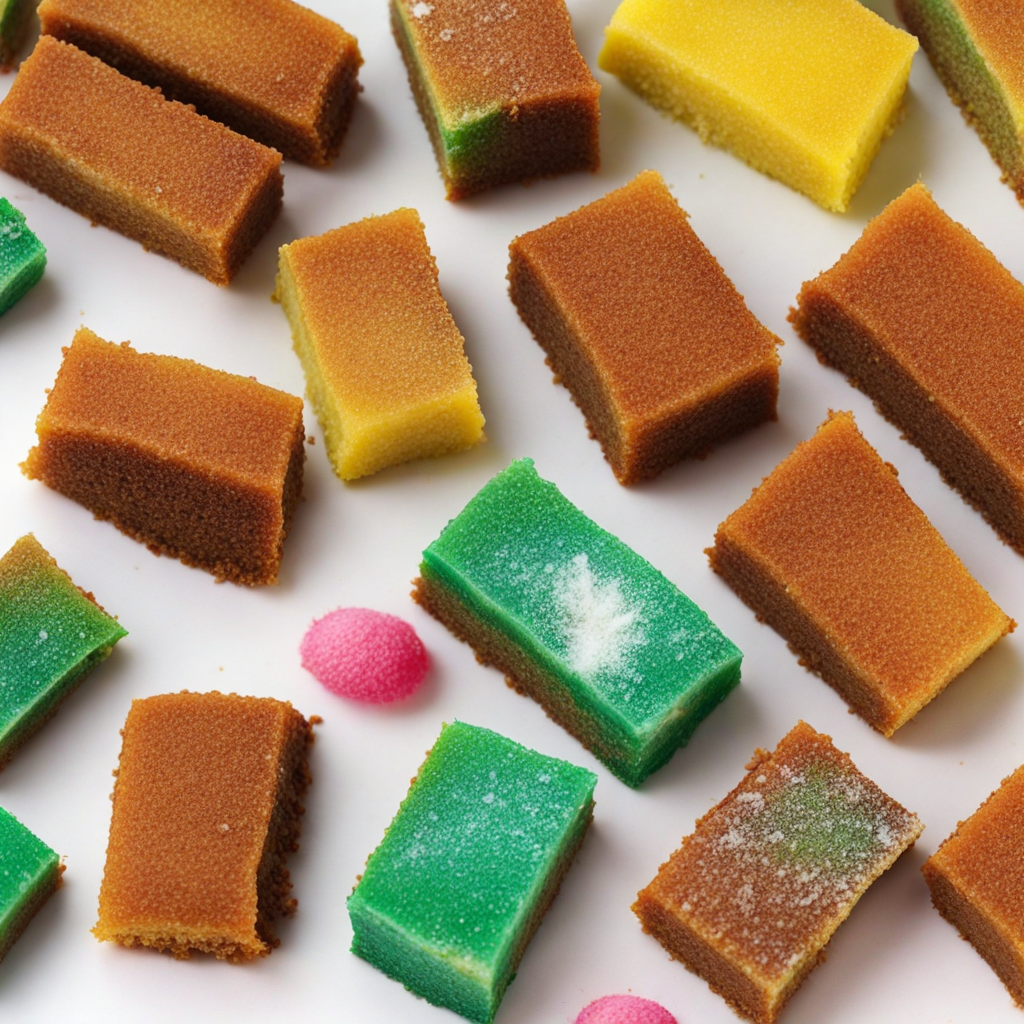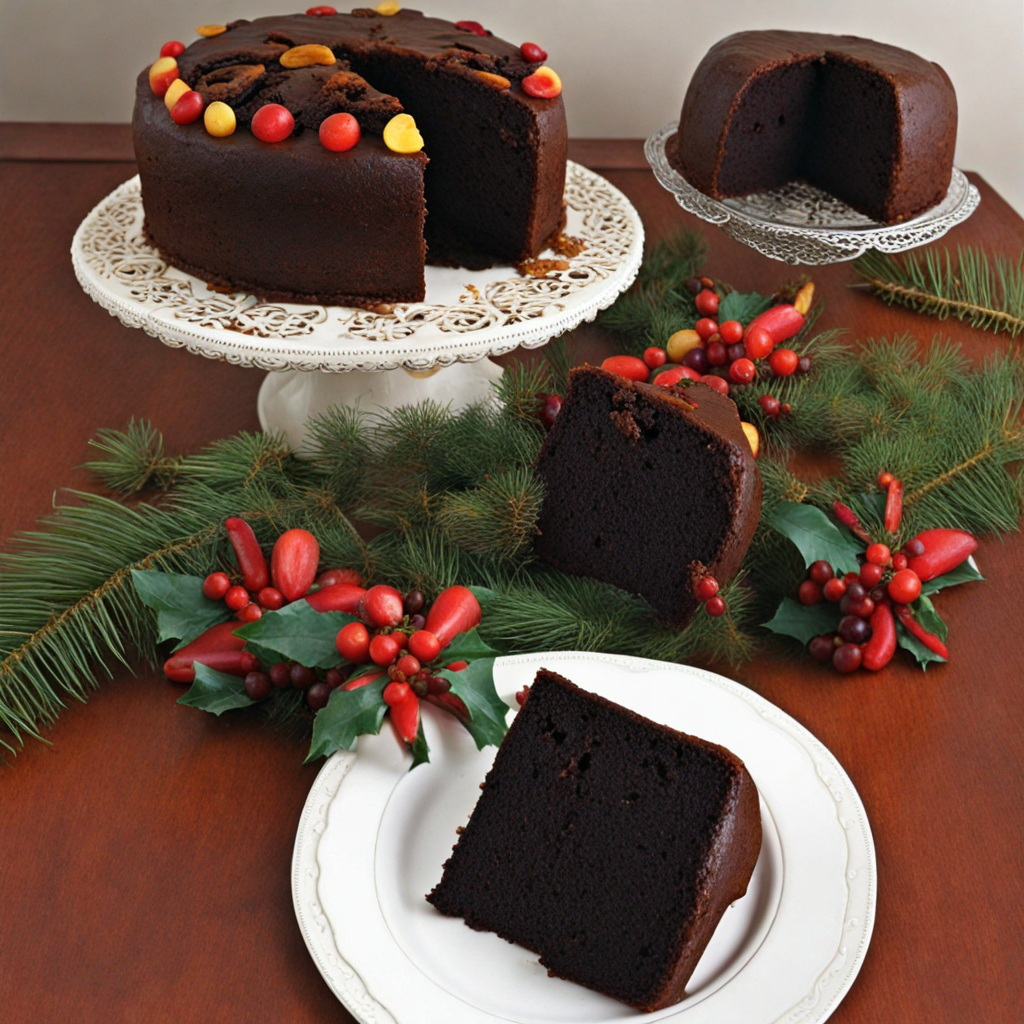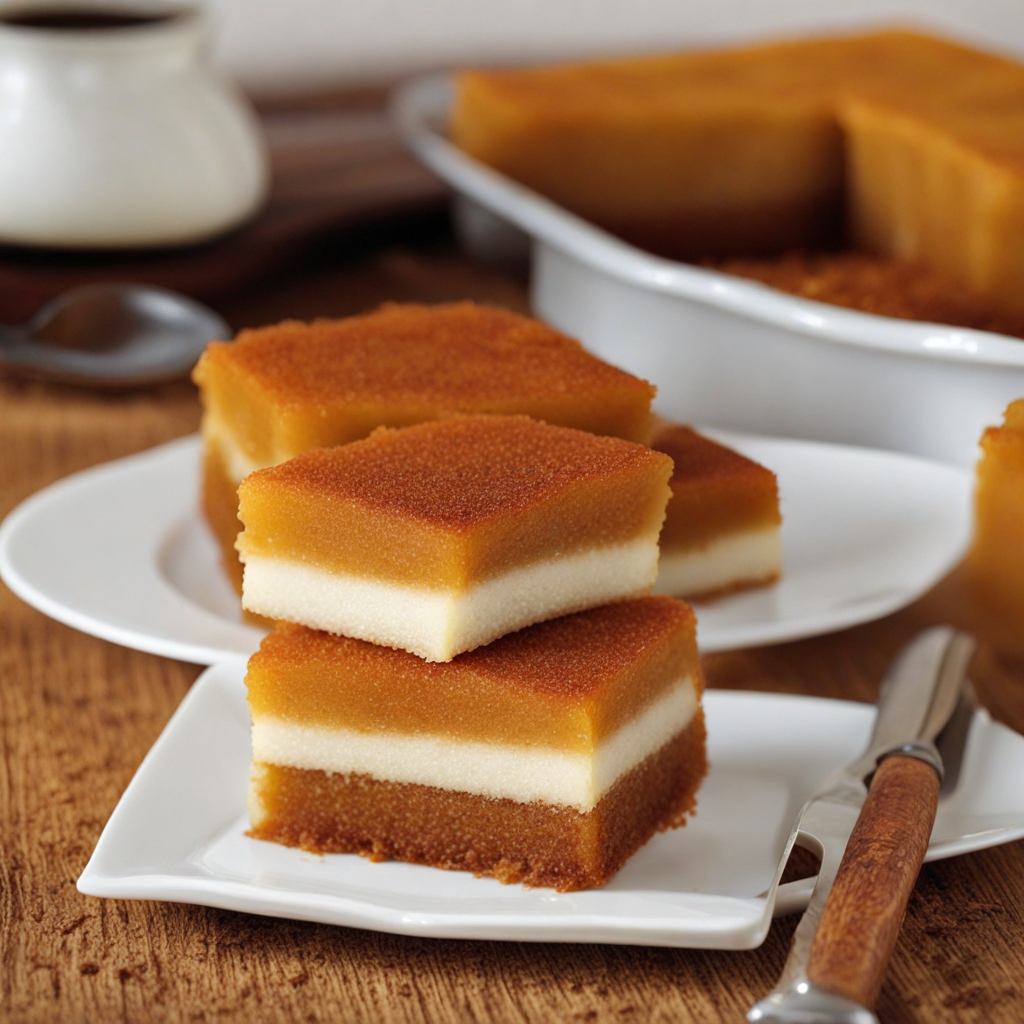Sugar Cake
Sugar Cake, a delightful treat hailing from Guyana, is a sweet confection that embodies the essence of Caribbean flavors. This traditional dessert is primarily made from grated coconut, sugar, and a hint of spice, often infused with nutmeg or vanilla. The combination of these ingredients results in a chewy, melt-in-your-mouth texture that is both satisfying and indulgent. The rich sweetness of the sugar harmonizes beautifully with the natural creaminess of the coconut, creating a flavor profile that is both simple and complex at the same time. Typically, Sugar Cake is prepared by boiling the grated coconut with sugar until it reaches a caramel-like consistency. Once the mixture thickens, it is poured into molds or shaped into small squares, allowing it to cool and solidify. The vibrant white of the coconut contrasts with the golden hues of the sugar, making it visually appealing as well. This dessert is often enjoyed during festive occasions, family gatherings, or simply as a delightful snack to satisfy a sweet tooth. For those looking to explore new tastes, Sugar Cake offers a unique experience that captures the spirit of Guyanese culture. Each bite reveals the craftsmanship behind this traditional recipe, showcasing the use of local ingredients that highlight the region's agricultural richness. The combination of textures and flavors makes it a perfect treat for both young and old, inviting everyone to partake in the joyous celebration of sweetness that Sugar Cake represents.
How It Became This Dish
The Sweet Journey of Sugar Cake in Guyana: A Culinary History #### Origins and Cultural Roots Sugar Cake, a beloved delicacy in Guyanese cuisine, is a sweet treat made primarily from grated coconut, sugar, and various flavorings, often including spices like nutmeg and vanilla. Its origins can be traced back to the rich tapestry of Guyana's cultural history, where indigenous peoples, African slaves, and East Indian indentured laborers intertwined their culinary traditions, creating a unique gastronomic landscape. Historically, the indigenous peoples of the region utilized local coconuts and sweeteners made from natural sources, laying the groundwork for the development of Sugar Cake. However, it was the arrival of enslaved Africans in the 17th and 18th centuries that significantly influenced the evolution of this dish. The Africans brought with them knowledge of coconut processing and sugar production, which became pivotal in crafting Sugar Cake. The availability of sugarcane, introduced by European colonizers, allowed for the sweetener that defines the treat today. As Guyana underwent further cultural diversification in the 19th century with the arrival of East Indian laborers, Sugar Cake evolved even further. The incorporation of cardamom, cloves, and other spices from Indian cuisine added a new dimension to the flavor profile of this already popular dish. This blending of culinary traditions is emblematic of Guyana’s multicultural society, where food serves as a reflection of shared histories and experiences. #### The Recipe and Preparation The traditional recipe for Sugar Cake is deceptively simple, consisting mainly of three ingredients: grated fresh coconut, sugar (usually brown), and water. The process begins with grating fresh coconuts, which are then mixed with sugar and sometimes a hint of water. This mixture is cooked over low heat until the sugar dissolves and the coconut absorbs the sweetness. Once the mixture thickens to a fudge-like consistency, it is poured into molds or onto a flat surface to cool and harden, often cut into squares or shaped into small mounds. While the basic recipe remains constant, variations abound, reflecting the creativity and regional differences within Guyana. Some versions may include chopped nuts, dried fruit, or additional spices, while others may feature a hint of lime or ginger for a refreshing zest. The flexibility of Sugar Cake makes it a versatile treat, enjoyed at various occasions and events. #### Cultural Significance Sugar Cake is more than just a treat; it is a symbol of celebration and community in Guyana. It is often made for special occasions, such as weddings, holidays, and festivals. During cultural events, such as Mashramani (a celebration of Guyana's Republic Day), Sugar Cake is frequently featured alongside other traditional foods, serving as a sweet reminder of the country’s rich heritage. In many households, making Sugar Cake has become a cherished family tradition, passed down through generations. It is often made as a communal activity, with family members gathering to grate coconut, mix ingredients, and share stories. This communal aspect reinforces the bonds of family and community, making Sugar Cake a symbol of togetherness and shared heritage. Moreover, Sugar Cake plays a role in religious and cultural ceremonies. It is often offered during Hindu festivals like Diwali, symbolizing the triumph of light over darkness and the celebration of abundance. In this context, it transcends being a mere snack; it becomes a part of spiritual traditions, weaving itself into the fabric of Guyanese identity. #### Evolution Over Time As Guyanese society has evolved, so too has the preparation and presentation of Sugar Cake. In recent years, with globalization and the fusion of culinary practices, chefs and home cooks alike have taken to experimenting with the traditional recipe. Modern variations may incorporate elements from international cuisines, such as chocolate or flavored syrups, appealing to a broader audience while keeping the essence of the original treat intact. The rise of tourism in Guyana has also contributed to the resurgence of interest in traditional foods, including Sugar Cake. Visitors are often introduced to this sweet delicacy through local markets and cultural festivals, where it is celebrated as a quintessential Guyanese treat. As demand grows, some entrepreneurs have begun commercial production, packaging Sugar Cake for both local and international markets. This commercial aspect has sparked discussions about authenticity and preservation of traditional recipes, as some fear that mass production may dilute the cultural significance and unique flavors of homemade versions. Despite these changes, the heart of Sugar Cake remains rooted in its cultural significance. It continues to be a vital part of Guyanese identity, serving as a sweet reminder of the nation's history and the fusion of diverse influences that characterize its culinary landscape. As Guyana progresses into the future, Sugar Cake stands as a testament to the resilience and adaptability of its people, a symbol of their shared past, and a celebration of their vibrant culture. #### Conclusion In conclusion, Sugar Cake is not merely a dessert in Guyana; it is a narrative of the nation itself—a story interwoven with the threads of history, culture, and community. From its indigenous roots to its evolution through African and East Indian influences, this sweet treat encapsulates the spirit of unity and diversity that defines Guyana. As generations continue to make and enjoy Sugar Cake, they not only savor its delightful flavors but also honor their heritage, ensuring that this beloved delicacy remains a cherished part of Guyanese culture for years to come. Whether enjoyed at a festive celebration or as a simple family treat, Sugar Cake continues to sweeten the lives of those who partake in its rich history.
You may like
Discover local flavors from Guyana







